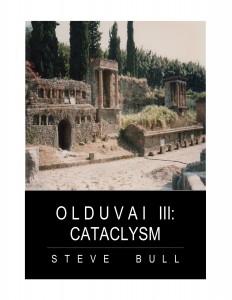Home » Posts tagged 'viral pandemic' (Page 4)
Tag Archives: viral pandemic
D614G: A New, More Serious Covid-19 Mutation To Worry AboutW
D614G: A New, More Serious Covid-19 Mutation To Worry About We’re not done with the honey badger virus by a long shot. Continuing its Keystone Cops manner of dealing with covid-19, the US appears to be caught flat-footed by the resurgence of infections happening across many southern and western states right now. Yes, people are […]
Curing COVID-19 Won’t Cure the Economy
Curing COVID-19 Won’t Cure the Economy We have been making the case for weeks that we aren’t heading for a quick recovery. We’ve reported on the number of people of small business owners who don’t think they’ll survive, the increasing number of over-leveraged zombie companies, and the tsunami of defaults and bankruptcies on the horizon. Yes, we have seen […]
What’s Next For Big Oil?
What’s Next For Big Oil? The global COVID-19 pandemic has had a significant role to play in Big Oil’s shift towards cleaner energy. Three of the world’s biggest oil and gas companies are planning to become net-zero carbon emitters by 2050. Tech will not only help Big Oil become more efficient–it may turn out to […]
American Exceptionalism Is on the Ropes and the End of the Petrodollar Is Nigh
American Exceptionalism Is on the Ropes and the End of the Petrodollar Is Nigh From the border wall rhetoric to trade wars, Trump is effectively setting up the implosion of the dollar and couching it as pseudo nationalistic populism. The pressure on the global economy imposed by the measures to curb the COVID-19 pandemic threatens […]
Weekly Commentary: Update COVID-19
Weekly Commentary: Update COVID-19 Can we even attempt a reasonable discussion? Someone’s got this wrong. June 12 – Reuters (Judy Hua, Cate Cadell, Winni Zhou and Andrew Galbraith): “A Beijing district put itself on a ‘wartime’ footing and the capital banned tourism and sports events on Saturday after a cluster of novel coronavirus infections centred […]
Lies, Damned Lies and Covid19
Lies, Damned Lies and Covid19 Growing up as I did in the Cold War, I still experience a special kind of shudder whenever I come across an anecdote like that of Katya Soldak, whose Soviet nursery school teacher once showed her class a photograph clipped from a Western newspaper, “depicting skinny [Russian] children in striped robes […]
Tragedies of Our Time: Pandemic, Planning, and Racial Politics
TRAGEDIES OF OUR TIME: PANDEMIC, PLANNING, AND RACIAL POLITICS An old adage says that tragedies often come in threes. Certainly, the first half of 2020 has seen a version of this. First, the coronavirus that has infected millions of people and killed hundreds of thousands. Second, the response by most governments to the virus by […]
The Great Reset – The Final Battle Against Marxists
The Great Reset – The Final Battle Against Marxists The rising civil unrest is starting to take notice of Bill Gates and his consortium hell-bent on changing the world economy. They have used the coronavirus as a ploy to shut down the world economy all for their Climate Change Agenda. There is a mountain of […]
An Epically Bad Week for US Brick-and-Mortar Retailers and Landlords
An Epically Bad Week for US Brick-and-Mortar Retailers and Landlords Winners in this crisis: Ecommerce – for retailers that don’t sell men’s office & formal wear – and for sure, lawyers. Tailored Brands, a holding company for men’s apparel stores, including Men’s Wearhouse and JoS. A. Bank, is considering filing for bankruptcy, according to sources cited by Bloomberg on June […]
If Stocks Don’t Hold Here We Could See Another Crash of Sorts
If Stocks Don’t Hold Here We Could See Another Crash of Sorts Stocks have fallen hard over the weekend again. The media is pinning this drop on the potential for another COVID-19 pandemic, but the facts don’t support that theory. At times like these, it’s essential to ignore narratives, and focus on price. With that […]
Canadian Banks Hit Hard By Low Oil Prices
Canadian Banks Hit Hard By Low Oil Prices Canada’s government has been perhaps surprisingly ready to help the country’s ailing oil industry. Interest-only loans, backstopping loans that troubled companies can’t pay have been among the steps taken so far. But they may not be enough. Canada’s oil industry has arguably suffered more than its peers across its […]
Central Banks Bailed Out Markets To Avoid Trillions In Pension Losses
Central Banks Bailed Out Markets To Avoid Trillions In Pension Losses The Organization for Economic Co-operation and Development (OECD) recently published a report showing how pension funds in OECD countries recorded a massive loss of approximately $2.5 trillion during the stock market meltdown in February through late March. Shortly, after that, central banks intervened with monetary cannons to rescue stock markets and […]
Europe must prepare for life after oil
Europe must prepare for life after oil The COVID-19 pandemic is forcing us to leave the fossil fuel era behind. Europe needs to begin preparing for what comes next. Oil prices have crashed. The most visible cause has been the measures taken to contain the COVID-19 pandemic, which have triggered record lows in global oil […]
COVID Spreads To 60 Plants, Sparks Fear Of US Food Shortages As 2nd Wave Strikes
COVID Spreads To 60 Plants, Sparks Fear Of US Food Shortages As 2nd Wave Strikes A new report reveals the severity of COVID-19 spreading beyond meatpacking plants to food processing facilities across the US. The Environmental Working Group (EWG) outlines this new reality of how the fast-spreading virus has infected 1,200 food processing workers at 60 plants from mid-March to early June. To […]
Insanity? Markets continue disconnect from economy and society
Insanity? Markets continue disconnect from economy and society It’s hard to ignore the protests on the streets of the world’s cities of late. Those protests are coming from a populace who knows that the system they live under long ago stopped benefiting them. While the focus has been the senseless killing by police of an […]



